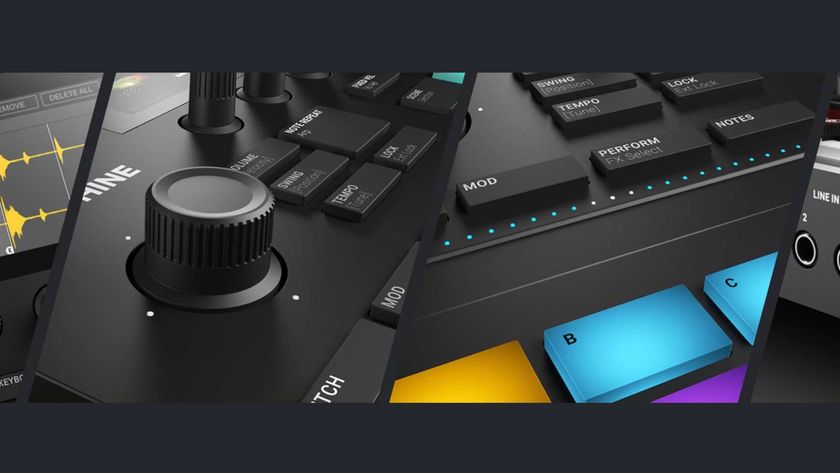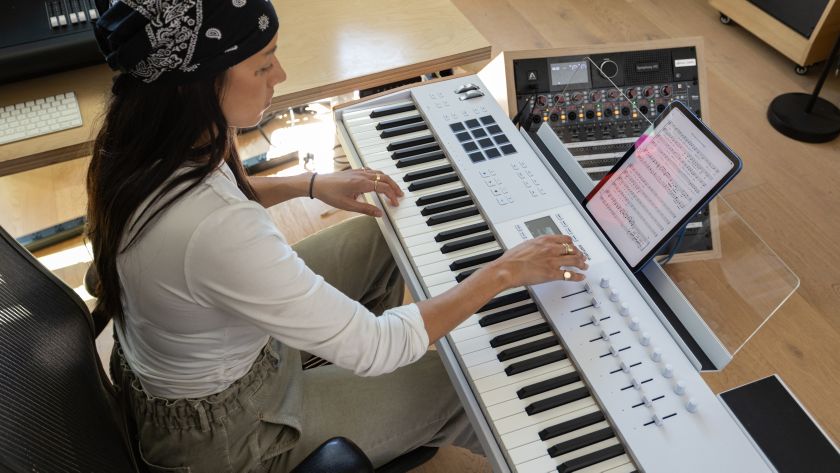FIRST LOOK: M-Audio Keystation Mini 32

M-Audio Keystation Mini 32

Controls

Connectivity

Compatibility

Size

QWERTY comparison
When Korg released the first versions of its NanoSeries controllers, it must have both infuriated and inspired its rivals. On the one hand, said rivals surely kicked themselves for not getting into the 'mini MIDI controller' market first, but they must also have sensed a big opportunity to create a better keyboard than the compact but limited nanoKey.
As you may be aware, the original nanoKey disappointed by offering flat, oblong buttons rather than proper keys, a curious design decision that wasn't altered even for the second generation version.
But sure enough, other manufacturers have stepped into the breach: Akai with its LPK25, and, funnily enough, Korg with its slightly larger microKey. Each of these has proper mini keys - 25 on the former and 37 on the latter - and both have their merits.
Mini in the middle
Enter M-Audio with the new Keystation mini 32, which costs £55. (Click here for a gallery of photos). Perhaps not coincidentally, this plants itself right between the LPK25 and microKey in the market by giving you 32 notes to play with. Immediately, then, it offers something different to what's already available.
Another thing that the Keystation has going for it is that it's about as compact as it could possibly be; the keys are of the low-profile variety, and only a tiny amount of space has been devoted to the control section to their left.
That said, M-Audio has still managed to squeeze in an assignable knob and seven buttons, three of which (the modulation and pitchbend up/down ones, to be precise) are also assignable.
The other four buttons are backlit and fixed to control octave up/down (handily, multi-coloured lights indicate how many octaves you've moved either way) sustain on/off and entering edit mode. Once this last button has been pressed, you can make those controller assignments, choose from one of five keyboard velocity curves, send MIDI messages and more.
Get the MusicRadar Newsletter
Want all the hottest music and gear news, reviews, deals, features and more, direct to your inbox? Sign up here.
Summary
And that, other than a mini USB port on its left side, is all there is to the Keystation mini 32, but our initial feeling is that it might sell rather well. The keys are fine as far as mini ones go (if a little springy), and having the third octave means that two-handed playing is just about possible. Get handy with the octave up/down buttons and you can even play solos on the thing.
Furthermore, the Keystation is a perfect partner for the iPad: just plug it in via the Camera Connection Kit and it works with CoreMIDI-compatible apps. This gives it an advantage over the microKey, which is reported to require a powered USB hub in order to work, compromising mobility. That said, the microKey does have a marginally superior key action, an extra five notes and proper pitchbend/modulation wheels.
We think M-Audio is onto a winner, though. Back in the day, it kickstarted and dominated the full-sized-key 25-note controller market with the Oxygen8, and although it's arrived rather later to the party this time around, it looks to have delivered the right product at the right price.
UPDATE: Included in the box with the Keystation Mini 32 is Sibelius First, an entry-level version of Avid's score creation software. This boasts a raft of features for anyone who wants to notate their music.

I’m the Deputy Editor of MusicRadar, having worked on the site since its launch in 2007. I previously spent eight years working on our sister magazine, Computer Music. I’ve been playing the piano, gigging in bands and failing to finish tracks at home for more than 30 years, 24 of which I’ve also spent writing about music and the ever-changing technology used to make it.





![Chris Hayes [left] wears a purple checked shirt and plays his 1957 Stratocaster in the studio; Michael J. Fox tears it up onstage as Marty McFly in the 1985 blockbuster Back To The Future.](https://cdn.mos.cms.futurecdn.net/nWZUSbFAwA6EqQdruLmXXh-840-80.jpg)






